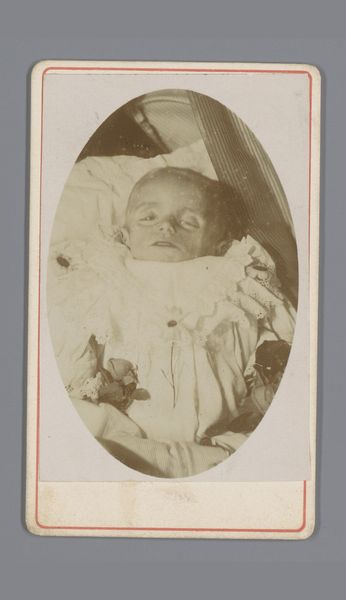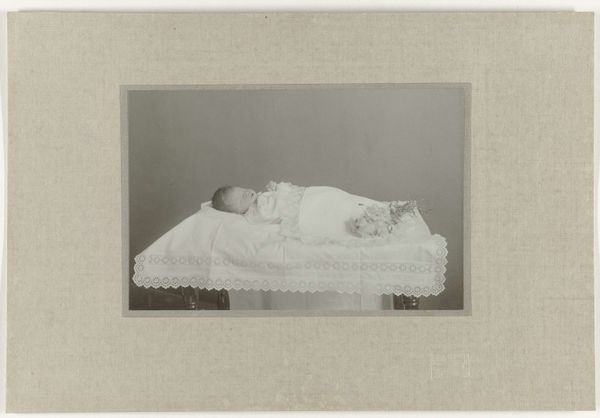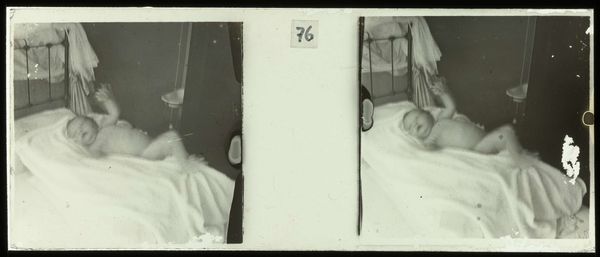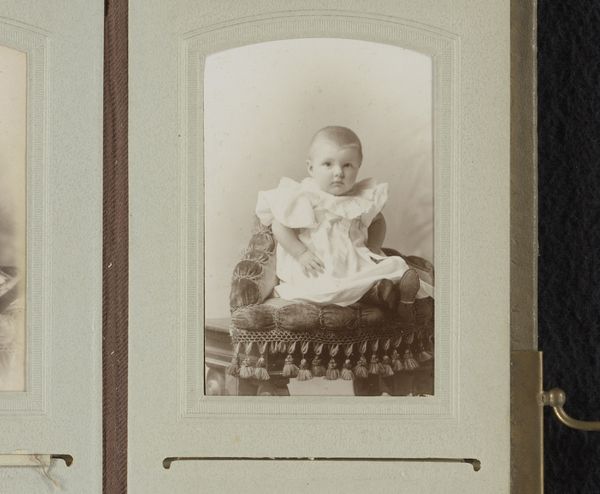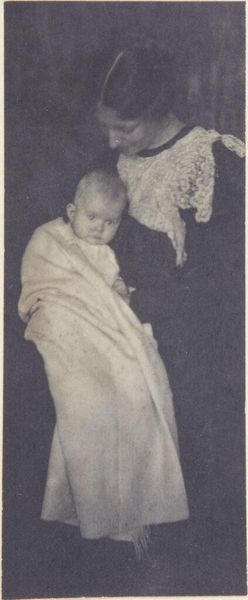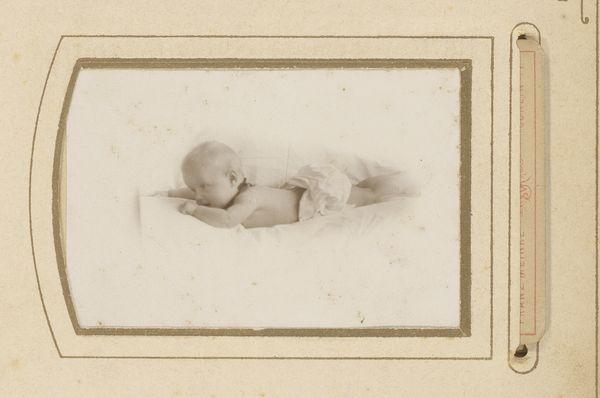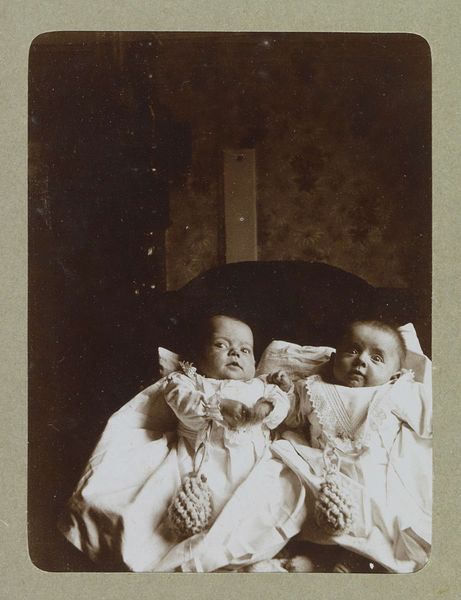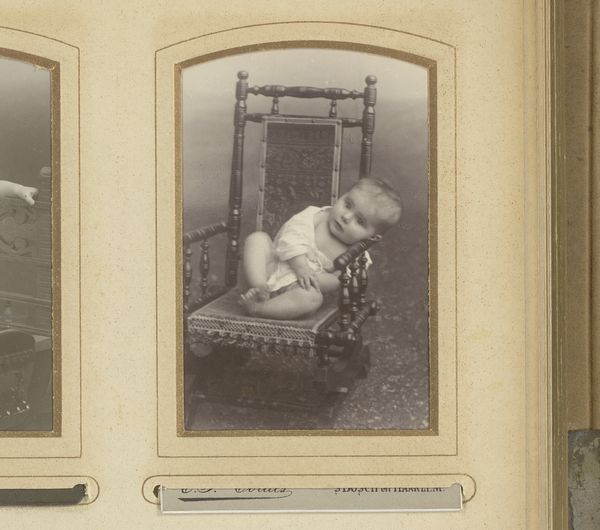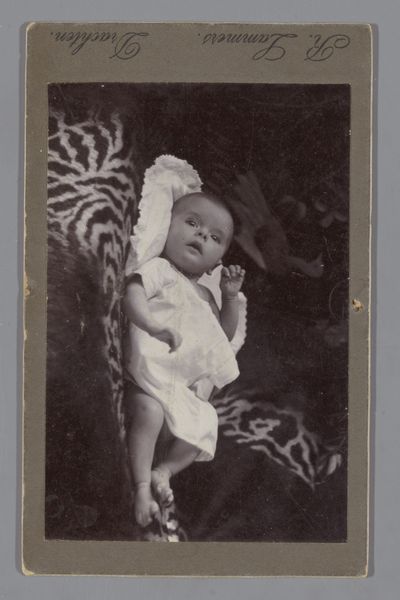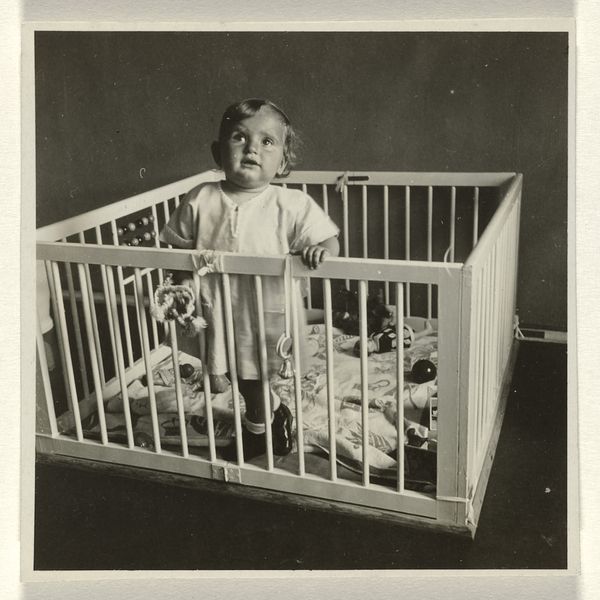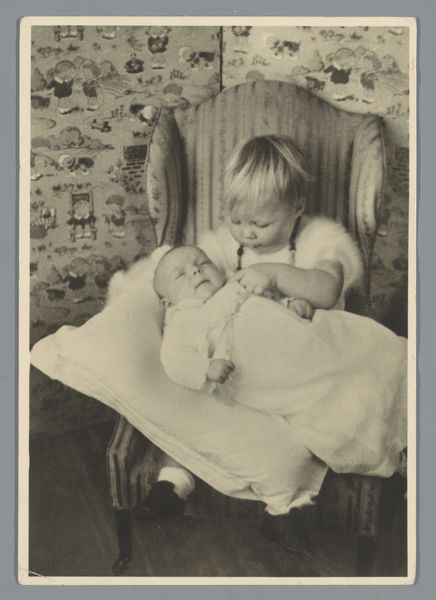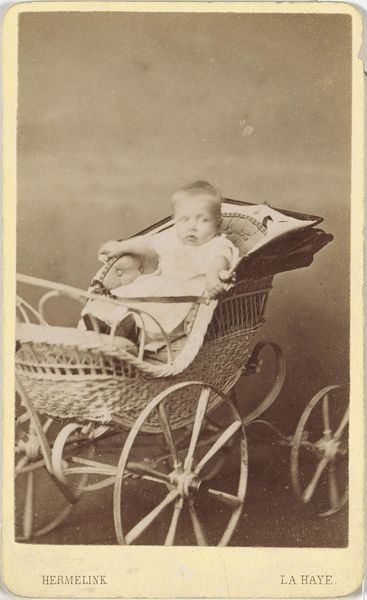
photography, gelatin-silver-print
#
portrait
#
print photography
#
still-life-photography
#
photography
#
gelatin-silver-print
#
realism
Dimensions: image: 7 x 11 cm (2 3/4 x 4 5/16 in.) sheet: 8.7 x 13.8 cm (3 7/16 x 5 7/16 in.)
Copyright: National Gallery of Art: CC0 1.0
Editor: Here we have an untitled gelatin-silver print from the 1920s, showing a baby asleep in a suitcase. The stark contrast creates a striking image, but honestly, the placement of the baby feels… unsettling. What do you see in this photograph? Curator: Unsettling is a perfect word. This image resonates with layered cultural anxieties and the constant human experience of migration. The suitcase, a vessel of transition and departure, becomes a cradle. What does it mean when the secure, still, quiet, private home is replaced by transient public transport infrastructure? Editor: So, the suitcase isn’t just a practical object, but a symbol? Curator: Precisely! It speaks volumes about impermanence, of lives packed and ready to move. We are seeing increased global mobility now, but mobility was increasing then too! Photography made it possible for people to circulate their image more freely. So, in a time of unprecedented globalization, to place the baby here suggests… perhaps vulnerability, dispossession, or even a kind of hope invested in travel and border-crossing. How does it speak to *your* memories? Editor: I suppose it does reflect a universal feeling… that sense of being between places, never fully settled. I hadn't considered the historical context and photography’s role like that. Curator: These potent images compress time and carry emotional resonance across generations. The anonymous photographer has accessed an iconography we’re still deciphering today. The circulation and manipulation of images in turn create and modify our own cultural memory, no? Editor: Definitely. Looking at it that way makes it much more thought-provoking. It's no longer just an odd picture, but a symbol of something bigger. Curator: Precisely. Our visual memories are powerful things.
Comments
No comments
Be the first to comment and join the conversation on the ultimate creative platform.
